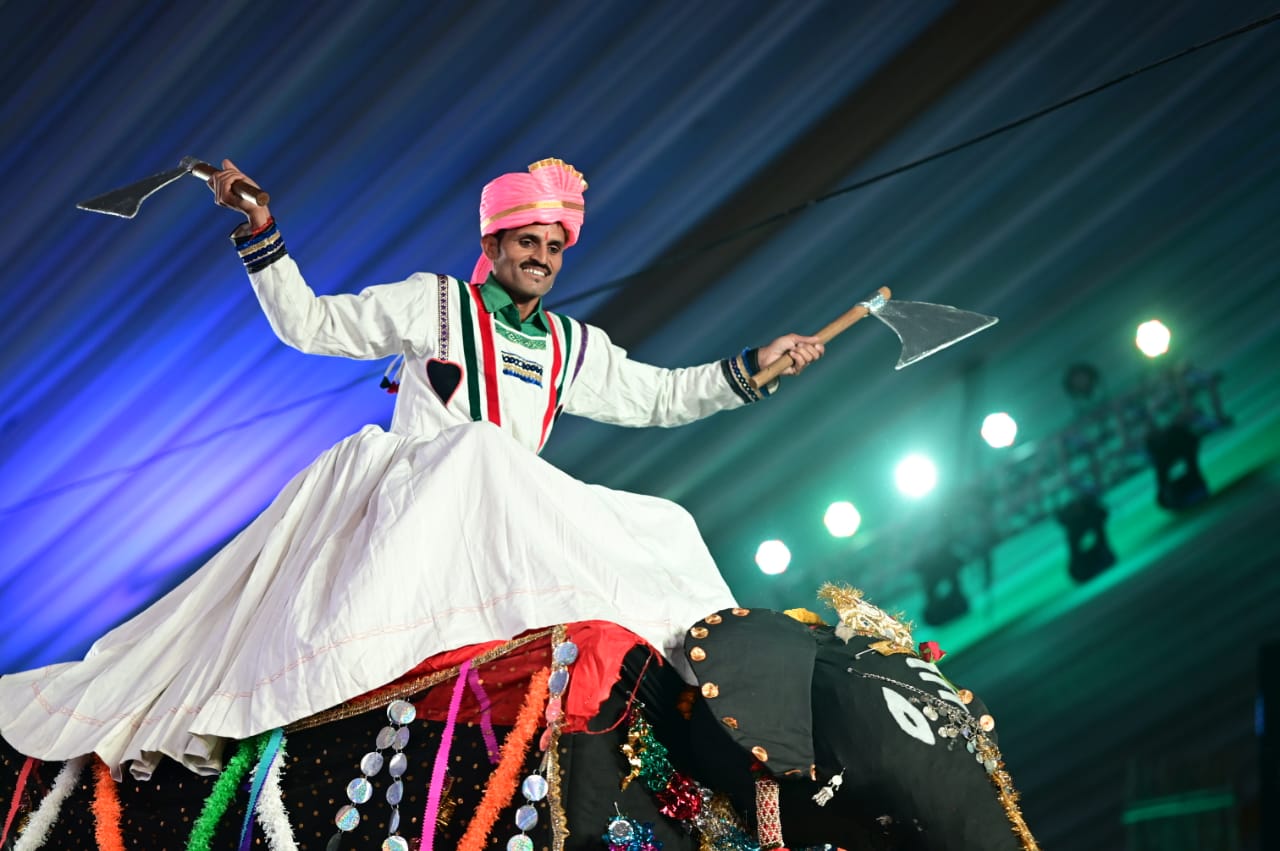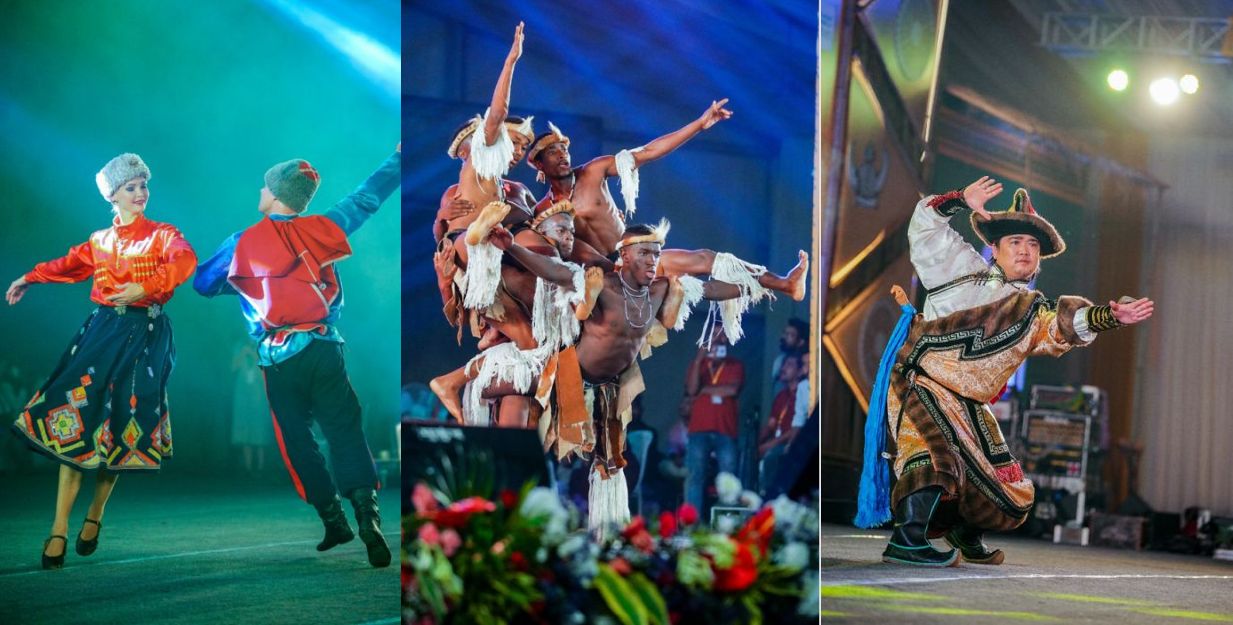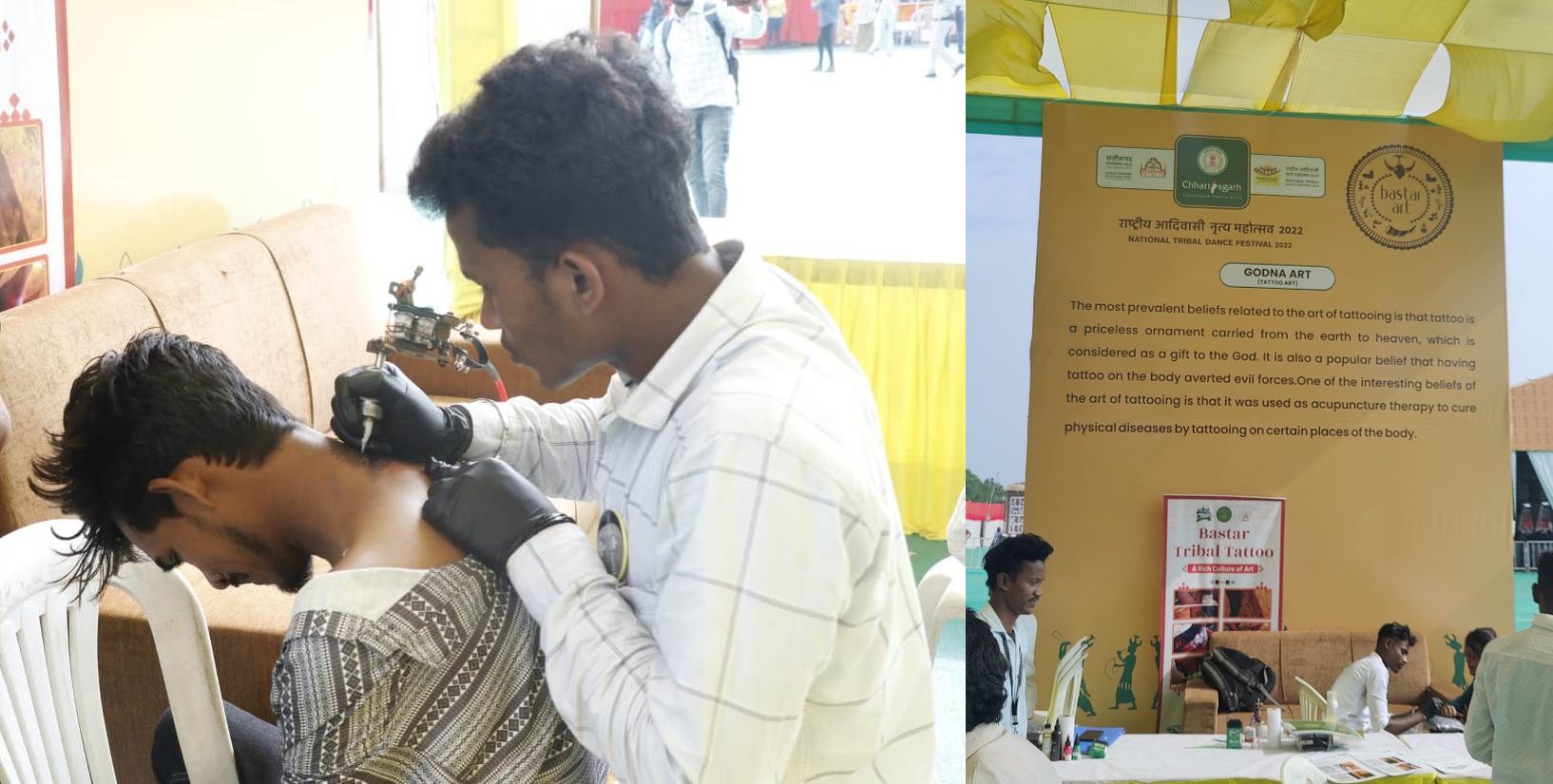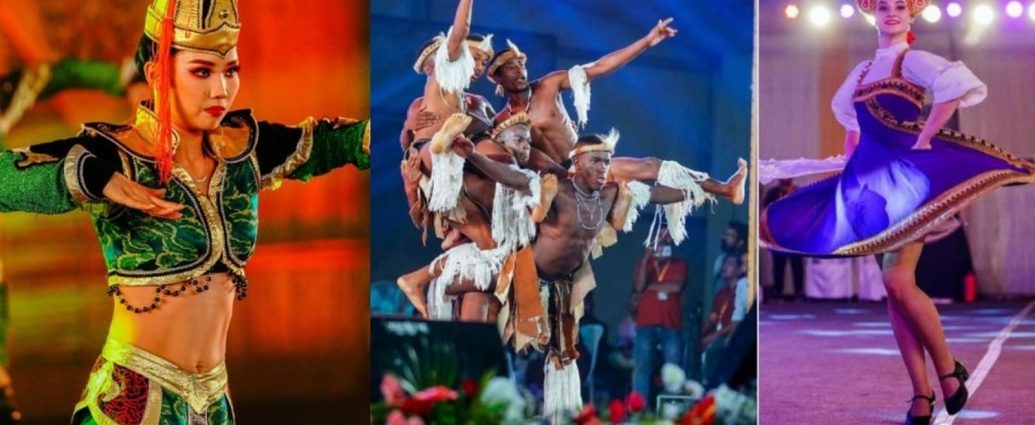One of the more epic scenes in the ahistorical drama and action-fantasy film RRR – a movie that has changed the grammar of cinema and the perception of Indian movies across the world – sees Komuram Bheem (the “Shepherd” of the Gond tribe) mocked by a snooty Britisher. What follows is an extremely exuberant dance sequence titled Naatu Naatu reminding us that there’s no better medium to pass on a message than dancing. Or, to quote Chhattisgarh CM Bhupesh Baghel from the opening ceremony of the National Tribal Dance Festival: “The history of dance is as old as the history of man.” It’s one of the oldest forms of human communication, and those who found themselves at the National Tribal Dance Festival were lucky to witness the tribal dances that have existed for centuries.
The National Tribal Dance Festival, held from November 1 – 3, 2022, at the Science College in Raipur, saw 1,500 artistes perform a series of dances from their native lands, many of which have been part of their lives and were handed down through generations. The artistes represented 28 states, 7 union territories, and 10 countries, including Egypt, Russia, New Zealand, Mozambique, and Serbia.
The opening ceremony saw Chhattisgarh’s CM Baghel sport the iconic Bison Maria Tribal headgear as he kicked off a show with such a gallimaufry of colour and noise that would make Woodstock sound like a library. As an interesting aside, the Bison Horn Maria Tribe is believed to have been either part of the Gond tribe or one that became assimilated with it in time.
CM Baghel stressed: “Tribes always wish that all humanity should have equal rights in nature, and everyone should do their part in protecting nature. Preserving primitive cultures is the goal of the National Tribal Dance Festival. Several efforts have been made to preserve Chhattisgarh’s culture.”
He added: “The development in a wrong way has become a threat to nature. Besides, it has also posed a threat to the rights of tribals over their “Jal Jungle Zameen” (water, forest, and land). The tribal dance festival aims to protect the age-old traditions and rights of tribals and promote it across the world. If we preserve our traditional values, then solidarity and unity will also prevail.”
Two separate incidents highlighted the popularity of the event and its unique energy. The first was when one left the venue. The line to get out was long and serpentine that it made Kurla at peak hour look deserted. The second was at the airport, which looked like a mini-United Nations with troupes from across the world trying to bypass bureaucratic red tape and catch their flights.
Held over three days, each performance had its own story, a tale of joy or sorrow, happiness, or reverence. Some were familiar, some were strange, but they all evoked tales. Tales of who we were, and who we used to be before modernity’s cruel wand sought to conform us into one bracket.
There was the Uttarakhand’s Jaunsari community’s Harul Dance performed atop a replica elephant while swinging an axe.

There was Maharashtra’s Songi Mask dance, performed during the Chaitra month, where two artists collaborated to create the face of Vishnu’s fourth avatar and Prahalda’s saviour, Narasimha.
From the northeast, there was Nagaland’s Maku Himsi dance, a terrifying battlefield spectacle performed with swords and spears, making sounds that can be heard from miles away. Mizoram’s Bamboo dance and Sikkim’s Tamang Selo will also live long in the memory. From Assam, you had the Bagdoishikhala dance of the Bodo tribe, which is performed on the occasion of the change of the seasons. Bagdoishikhala is an amalgamation of Bagh (Water), Doi (air), and Shikhla (woman).
There was also Odisha’s traditional Dhemsa dance, a dance that is usually performed late at night. From Gujarat, you had the African-origin Siddhi Tribe’s Dhamal.

Brought to India in 628 AD, the Siddhis insist that while their culture is African, their heart is Indian. Gujarat’s troupe also performed the famous Rathwa Dance, which saw the troupe form a human pyramid.
At times, hearing the aeons-old beats reverberate across the arena almost sent one into a reverie, which was only broken by the chants of Chhattisgaria Sable Badia (Chhattisgarh is the best), which was as ubiquitous at the venue as Wakanda Forever is in the Marvel Cinematic Universe.
The performances by the foreign troupes were equally captivating. The Russians who got the loudest cheers performed Khorovod, Plyaska, Kalinka, and the Cossack dances. The Serbians showed a few moves inspired by shepherds tasked with herding sheep in much colder climates. The Egyptians performed dances that were centuries old, passed down from ancestors. Then there was the traditional Haka dance by the Kiwis which any rugby fan would recognise.

And, of course, a special mention for the Maldives team that appears to have imbibed the local culture from all the Bollywood Instagrammers as they brought the house down with an impromptu performance of Beedi from Omkara.
Not Just A Song and Dance Affair
Of course, while the main attraction was the artistes, they weren’t the only ones to bring the crowds to the yard. Among the most popular stalls was the Bastariya Bhaat Stall serving tribal delicacies like Mahua Laddu, Mahua Tea, Bhaat, Cheela, Aamat, Basta Sabzi, et al. One crowd favourite was the Chapda, a red-ant chutney that made it to Gordon Ramsay’s menu when he came to India to shoot a documentary. Many believe that eating it keeps diseases like malaria and dengue at bay.
Another favourite was the Gur Bobo of Bastar, a sort of jaggery bhajiya served at social events like births, marriages, funerals, and the traditional Teej festival.

The other stall that garnered a lot of interested visitors was the Bastar Tribal Tattoo parlour which uses an ancient tattooing technique. With the help of the Training from the Bastar Art Gallery in Jagdalpur, the parlour also helps provide the youngsters from the area with a steady income stream. The received wisdom of the ancient tribes was that tattooing not only kept evil forces at bay but also helped stave off some physical ailments, much like acupuncture. They also held that the tattoos accompany a person from earth to heaven and are, therefore, a priceless ornament, a gift from the gods.
Sadly, all parties must end but not before a star-studded closing ceremony that saw Jharkhand CM Hemant Soren drop in as the Chief Guest. The event also had prize monies for the winning teams. The prizes were awarded in two categories: Dance for Harvesting Crops and Other Traditional Dances. The prize monies included ₹5 lakh for the winning troupe, ₹3 lakh for the runners-up, and ₹2 lakh for the third place.
Winners in the Harvesting Crops Dance Category
1) Chhattsigarh’s Karma Dance
2) Odisha’s Dhemsa Dance
3) Himachal Pradesh’s Gaddi Nati
Winners in the Other Traditional Category
1) Sikkim’s Tamang Selo Dance
2) Odisha’s Ghurka Dance
3) Jharkhand’s Dhanradya Dance
At the closing ceremony, CM Baghel sought to make a point about culture’s ability to unite diverse folks. He said: “Primitive culture serves to unite us all. We have organized the National Tribal Dance Festival with the aim to preserve its cultural values and showcase its beauty on stage to everyone.”
In its own unique way, the festival reminded us that our idea of deracinated modernity would be harmful if it eradicated our close ties to nature and our century-old traditions. It was a reminder to all that India is a vast tapestry where just one culture can never define its heritage. Seeing the performances, many from cultures that we’ve never encountered reminds us of the great diversity of this country and the many stories we have inherited from our ancestors.

Of all the words to describe the festival, U Peaca, Serbia’s troupe leader summed it up best: “Our group has travelled across the globe, and we have seen many festivals, but we have never seen this much energy in one place.” The history of dance might be as old as the history of man, but as long as humanity exists, so will dance. And about one lakh folks got a front-row seat to witness that history in Raipur.
